Follow Us:
Share
Table of Contents:
The Russian KH-101 missile has been a central figure in discussions about Russia’s advanced military capabilities. Known for its long-range precision and stealth features, the KH-101 is a key component of Russia’s strategic arsenal.
In this post, we’ll dive deep into what the KH101 is, its history, cost, and what makes it such an effective weapon. Let’s explore everything there is to know about the KH-101 cruise missile.
What is the Russian KH-101 Missile?
Overview of the KH-101 Missile’s Design and Purpose
The Russian KH-101 missile, sometimes spelled KH101 or KH-101, is a long-range, air-launched cruise missile developed by Russia. This advanced weapon is designed to deliver conventional or nuclear payloads with high precision.
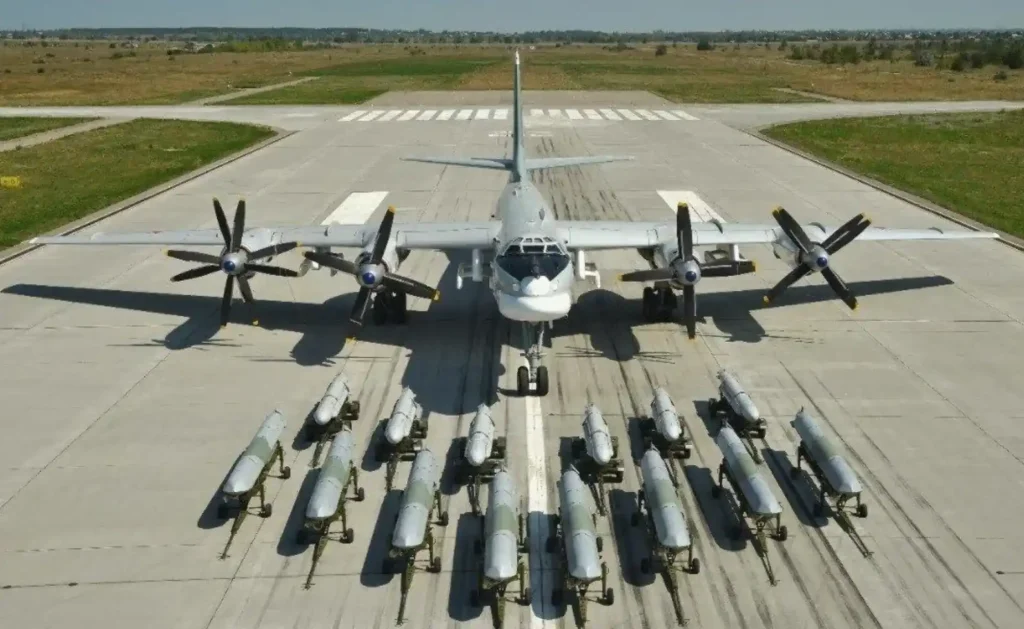
The KH101 belongs to a family of cruise missiles developed to replace the older KH-55 and KH-555 missiles. It has been specially engineered to be stealthy, making it harder to detect by radar systems, which is crucial for modern-day warfare.
The Russian KH-101 cruise missile is often deployed by strategic bombers like the Tupolev Tu-95MS and Tupolev Tu-160, giving Russia the flexibility to strike at long distances.
Origins and First Deployment of the KH-101
The Russian KH-101 missile was developed by the Russian defense industry to replace older cruise missile models like the KH-55 and KH-555. Development of the KH-101 began in the 1990s, as part of Russia’s effort to modernize its long-range strike capabilities. The missile was designed by the Raduga Design Bureau, which has a long history of creating air-launched cruise missiles for the Russian military.
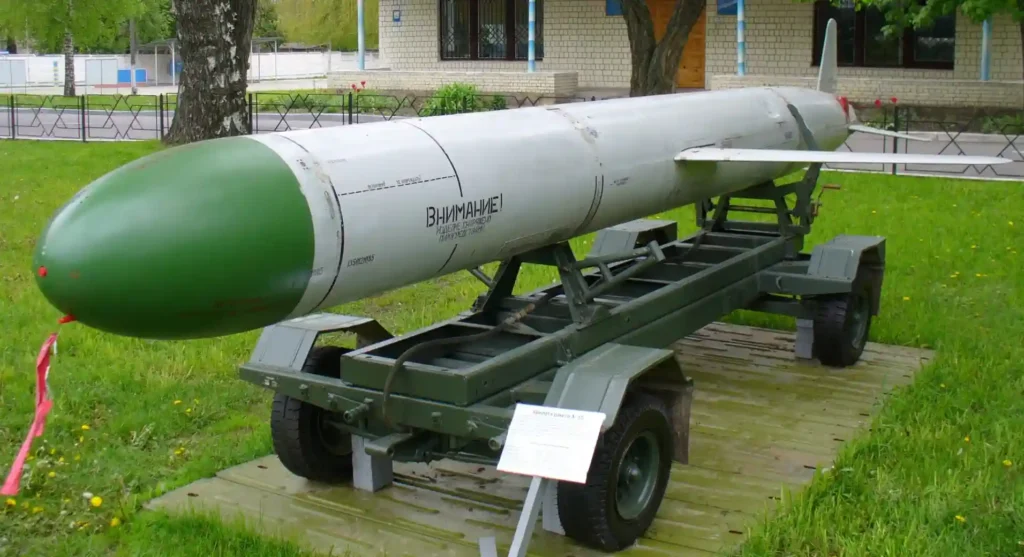
First deployed in the early 2010s, the KH-101 and its nuclear-capable variant, the KH-102, quickly became a key part of Russia’s strategic and tactical arsenal. The missile’s early tests were reportedly successful, demonstrating its ability to deliver precision strikes at long distances. In recent years, it has been used in real-world combat scenarios, which further validated its effectiveness.
How the KH-101 Fits into Russia’s Cruise Missile Arsenal
The Russian KH-101 cruise missile is a part of a broader family of Russian cruise missiles, including the nuclear variant KH-102. It serves as a key strategic asset for Russia, providing the nation with the ability to strike critical targets from a considerable distance.
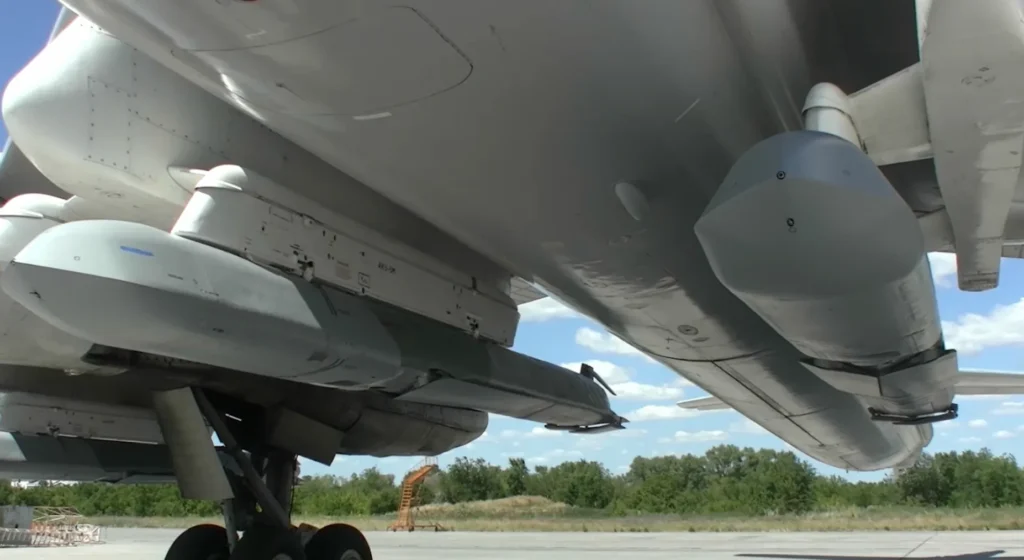
In fact, this cruise missile boasts a range that exceeds many of its Western counterparts, including the American Tomahawk. This missile family is designed with two primary goals in mind:
- Stealth and Low-Detectability: The KH101 features low-observable technology to avoid enemy radar detection.
- Precision Strikes: With advanced guidance systems, the KH-101 Russian cruise missile can hit targets with impressive accuracy.
The missile’s role in Russia’s military strategy is evident from its deployment in various recent conflicts, where it was used effectively to engage strategic targets.
Key Specifications of the Russian KH-101 Missile
Technical KH 101 Blueprint
The Russian KH101 missile is an impressive piece of technology, boasting several features that make it a standout in modern military arsenals.
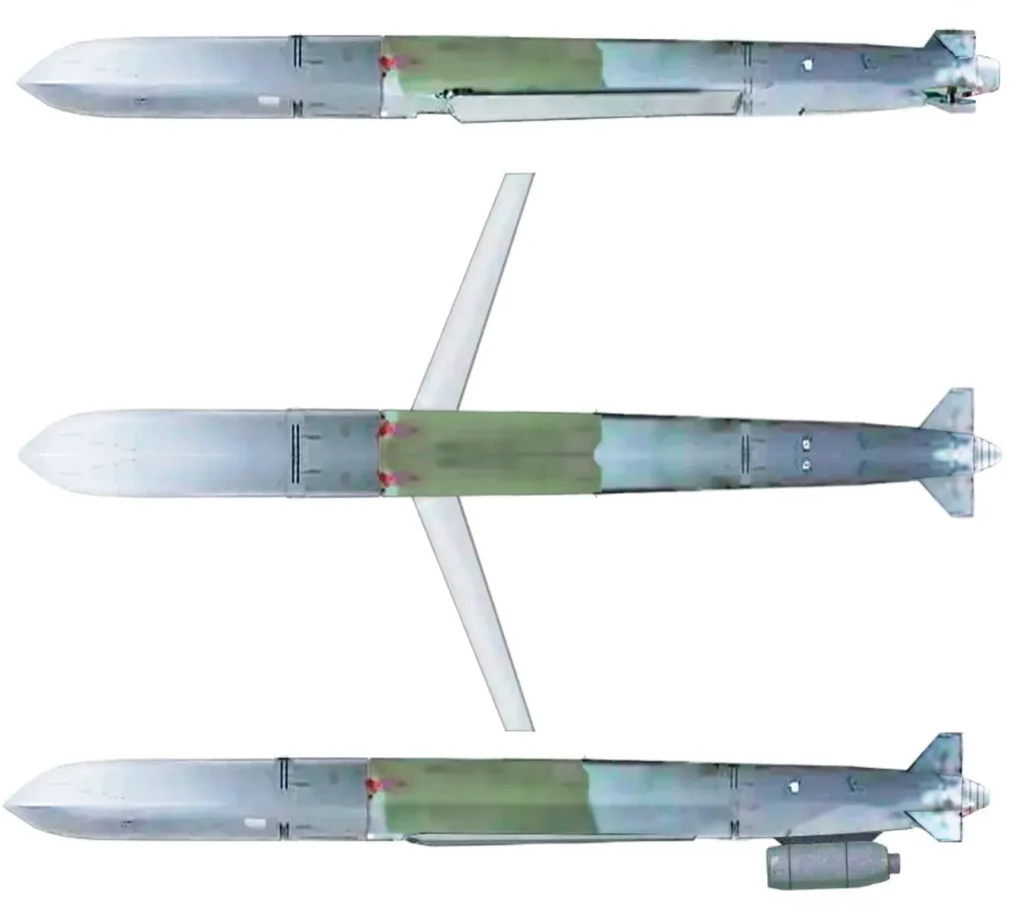
Here’s a closer look at the missile’s key specifications:
| Specification | Details |
| Length | Approximately 7.45 meters |
| Weight | Estimated around 2,200–2,400 kilograms |
| Range | 4,500–5,500 kilometers |
| Warhead Capacity | Conventional or nuclear (up to 400 kg) |
| Speed | Subsonic (about 970 km/h) |
| Guidance System | Inertial and satellite navigation |
| Launch Platform | Tu-95MS, Tu-160 bombers |
The missile’s range of over 4,500 kilometers places it in the long-range cruise missile category, giving Russia the ability to strike deep into enemy territory without exposing its strategic bombers to high-risk zones.
KH 101 Warhead Capacity and Variants
The KH 101 warhead is designed to be versatile. The missile can carry a variety of conventional warheads, but it is also designed to carry a nuclear payload if needed. This adaptability is what makes the KH101 missile such a strategic weapon for Russia. In fact, the KH-102 is the nuclear version of this missile, designed specifically for delivering nuclear warheads.
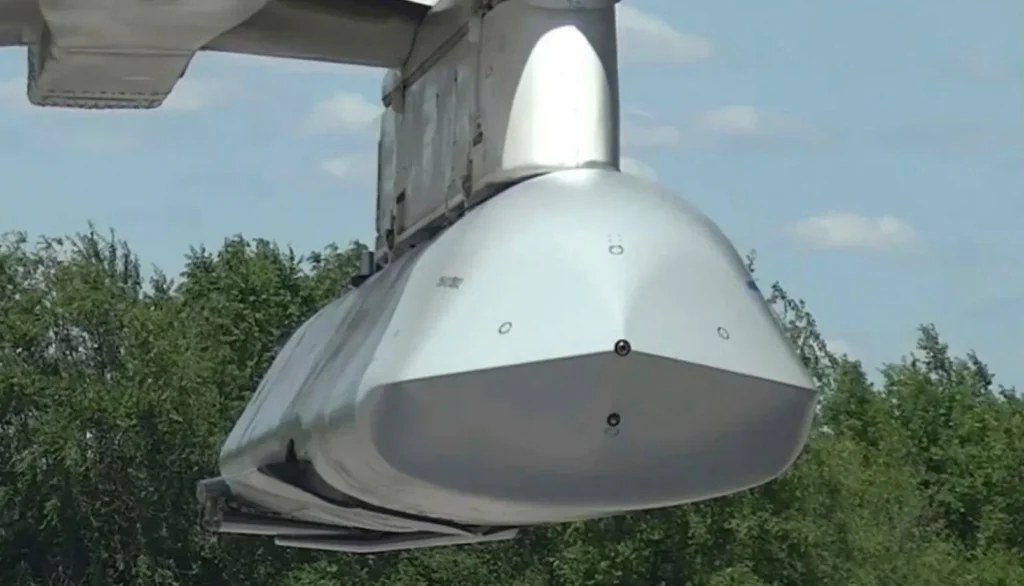
The typical warhead capacity of the KH-101 is up to 400 kilograms, and it is engineered to achieve a high level of precision. The missile uses an inertial guidance system combined with satellite navigation, allowing it to achieve a circular error probable (CEP) of just 5-20 meters. This accuracy significantly reduces collateral damage, making the Russian KH101 missile a highly effective precision-strike weapon.
KH-101 Speed and Range
One of the most notable features of the KH-101 long-range cruise missile is its impressive range. Capable of traveling between 4,500 and 5,500 kilometers, the missile is a formidable threat to distant targets. This range allows Russian bombers to stay out of the reach of enemy air defenses while still hitting critical infrastructure or strategic locations.
Despite being a subsonic missile, with a maximum speed of about 970 km/h, the KH-101’s stealth and low-detectability make it difficult to intercept. The missile’s combination of long range and advanced stealth technology enables it to reach its target with minimal detection, a significant advantage in modern warfare.
Strategic Importance of the KH-101 Missile
Role of the KH 101 Missile in Russia’s Military Strategy
The Russian KH-101 missile is not just another piece of military hardware; it represents a core element of Russia’s strategic approach to modern warfare. With its impressive range and precision capabilities, the KH101 plays a key role in long-range, stand-off attacks. It allows Russian forces to launch strikes from a safe distance, reducing the risk to their aircraft and crews.
One of the primary uses of the Russian KH-101 missile is to target enemy infrastructure, command centers, and strategic facilities with minimal collateral damage. The missile’s high accuracy—achieved through a combination of inertial guidance, satellite navigation, and terminal guidance systems—makes it highly effective for hitting specific targets in complex environments.
Strategic Applications of the Russian KH101 Cruise Missile
The KH-101 cruise missile has been deployed in several recent conflicts and military operations, demonstrating its capabilities. Notably, the missile was used during the Russian military intervention in Syria, where it was launched from Tu-95MS and Tu-160 bombers to strike various targets. This deployment showcased the missile’s range and accuracy, as well as its ability to evade enemy air defenses due to its low observability.
📹🇷🇺 Meet Russia's Kh-101 long-range cruise missile – a marvel of military engineering. pic.twitter.com/VHVkU8HpVL
— Tibo91 (@Tibortibor15) December 29, 2023
Here are some strategic applications of the Russian KH-101 missile:
- Long-Range Precision Strikes: With a range of up to 5,500 kilometers, the KH-101 can hit distant targets without exposing the launch aircraft to enemy defenses.
- Stealth Missions: The missile’s low radar cross-section makes it difficult for enemy radars to detect and intercept, enhancing its effectiveness in contested airspace.
- Nuclear and Conventional Payloads: The KH-101’s adaptability allows it to carry either a conventional or nuclear warhead, making it a versatile tool in Russia’s strategic arsenal.
- Strategic Deterrence: The presence of a missile like the KH-101 in Russia’s arsenal serves as a strategic deterrent, signaling to potential adversaries that Russia has the capability to launch long-range precision strikes if needed.
KH 101 Missile in Relation to Global Military Threats
In the context of global military threats, the Russian KH-101 cruise missile stands out as a formidable asset. It is designed to penetrate sophisticated enemy defenses and strike high-value targets, which makes it a key tool in Russia’s strategic deterrence policy.
The missile’s ability to carry a nuclear warhead further strengthens its role as a crucial part of Russia’s nuclear triad, alongside strategic bombers and intercontinental ballistic missiles (ICBMs).
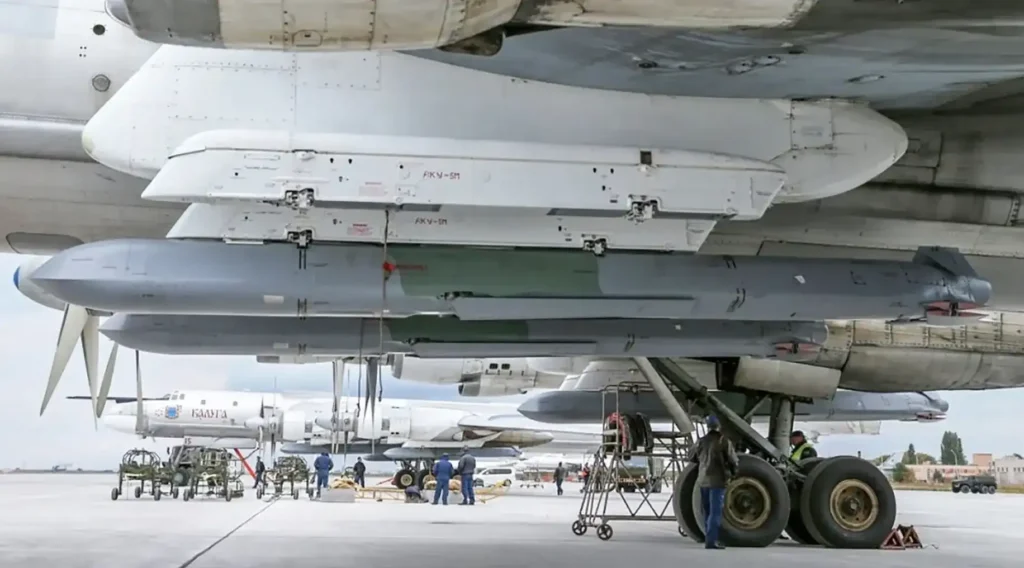
With ongoing geopolitical tensions, the Russian KH-101 missile has taken on added importance as a means for Russia to project power and deter potential threats. It is often compared to the American Tomahawk and the Chinese CJ-10, both of which are similar in design and purpose.
The Russian KH-101 Missile Cost Analysis
KH-101 Missile Cost and Budget Implications
The cost of the KH-101 missile is a crucial factor to consider when evaluating its strategic value. Producing a high-tech cruise missile like the KH-101 involves considerable expense, due to its sophisticated guidance systems, stealth technology, and versatile warhead options. According to defense analysts, the estimated cost of a single KH-101 missile ranges between $2 million and $2.5 million.
This pricing positions the KH-101 among the more expensive air-launched cruise missiles in the world, similar to the American Tomahawk and the French-British Storm Shadow missiles. The high cost can be attributed to several factors, including the following:
- Stealth Technology: The KH-101 is designed with low-observability features, reducing its radar cross-section and making it difficult to detect.
- Advanced Guidance Systems: The missile is equipped with inertial navigation combined with satellite navigation, which requires precise and expensive technology.
- Warhead Versatility: The missile’s ability to carry both conventional and nuclear warheads adds to its complexity and production cost.
Despite the high price, the Russian KH-101 missile is seen as a valuable investment for Russia due to its strategic capabilities and role in projecting military power.
Comparative Analysis of the KH-101 Missile Price
When comparing the KH-101 missile price to other leading cruise missiles, it becomes evident that its price point reflects the level of technology and the strategic flexibility it offers. Here’s a comparison of the KH-101’s estimated price with some similar cruise missiles:
| Missile | Country | Estimated Cost |
| KH-101 | Russia | $2 – $2.5 million |
| Tomahawk | USA | $1.5 – $2 million |
| Storm Shadow | UK/France | $1.4 – $1.8 million |
| AGM-86 ALCM | USA | $1.8 – $2.2 million |
As shown in the table above, the KH-101’s cost is comparable to other advanced cruise missiles used by leading global militaries. The cost factor, however, does not diminish its value, as the Russian KH101 missile offers superior range and stealth features, making it an essential part of Russia’s defense strategy.
Key Features of the Russian KH-101 Missile
Advanced Guidance Systems and Stealth Features
One of the most critical aspects of the Russian KH-101 missile is its sophisticated guidance system. The missile uses a combination of inertial navigation systems (INS) and satellite-based guidance to achieve pinpoint accuracy. Here’s a breakdown of the key technological elements:
- Inertial Navigation System (INS): This system uses onboard sensors to calculate the missile’s location based on its speed, direction, and starting position. INS allows the KH-101 to maintain a stable course even if GPS signals are disrupted.
- Satellite Navigation: The missile relies on satellite-based navigation systems, such as Russia’s GLONASS, to receive real-time positional updates. This combination of INS and satellite navigation enables the KH-101 to achieve a circular error probable (CEP) of just 5–20 meters, making it highly accurate.
- Terrain Contour Matching (TERCOM): Some variants of the KH-101 may also use TERCOM, which compares the terrain below the missile with pre-loaded maps to fine-tune its flight path, especially in low-level flight.
Stealth and Low Observable Capabilities
One of the defining features of the KH-101 long-range cruise missile is its stealth technology. The missile is designed with a low radar cross-section, which means it reflects less radar energy and is harder to detect by enemy radars. Here’s how this stealth capability is achieved:
- Shape and Materials: The KH-101 has a sleek and aerodynamic shape, with minimal protruding parts that could reflect radar waves. It is also coated with radar-absorbing materials, which help reduce its radar signature.
- Low-Altitude Flight: The missile is capable of flying at low altitudes, which allows it to stay below the radar horizon, further decreasing its chances of detection.
How the Russian KH-101 Missile Compares to Other Missiles
Comparison of the KH-101 Missile with Other Cruise Missiles
The Russian KH-101 missile is part of a highly competitive field of long-range cruise missiles. To understand its place in global military arsenals, it’s helpful to compare the KH-101 with other well-known cruise missiles. Here, we’ll take a closer look at how the KH-101 stacks up against its peers, particularly the X-101, KH-102, and American and Chinese counterparts.
KH-101 vs X-101 Missile: Key Differences
One common question that arises is the difference between the KH-101 and X-101. It’s important to note that these are essentially the same missile. The confusion often stems from translation differences between the Russian Cyrillic “Х” (which is transliterated as “KH”) and the Latin alphabet. Thus, the “KH-101” and “X-101” refer to the same missile. Both terms are widely used in English-language military publications.
While the X 101 missile and KH 101 missile are the same, there is a slight difference in terminology when referring to the nuclear-capable variant. In Russian military designations, the KH-102 (sometimes spelled X-102) is the nuclear version, whereas the Russian KH-101 missile carries a conventional warhead.
Comparison of the KH-101 vs KH-102
The KH-102 is the nuclear variant of the KH-101, and while it shares most of its features with the conventional KH-101, it has one key difference: the warhead. The KH-102 is designed to carry a nuclear payload. Here’s a quick comparison:
| Feature | KH-101 | KH-102 |
| Warhead | Conventional (up to 400 kg) | Nuclear |
| Range | 4,500–5,500 km | 4,500–5,500 km |
| Guidance System | Inertial and Satellite | Inertial and Satellite |
| Stealth Features | High | High |
In essence, the primary distinction between the KH-101 and KH-102 is their intended payload. This allows Russia to choose the appropriate variant based on the mission’s requirements and strategic objectives.
How Does the KH-101 Compare with Other Global Cruise Missiles?
The Russian KH-101 missile holds its own when compared to leading cruise missiles from other countries. Here’s a quick overview:
| Missile | Country | Range | Warhead | Stealth Capabilities |
| KH-101 | Russia | 4,500–5,500 km | Conventional | High |
| Tomahawk | USA | 1,600–2,500 km | Conventional/Nuclear | Moderate |
| CJ-10 | China | 1,500–2,000 km | Conventional | Moderate |
| Storm Shadow | UK/France | 560 km | Conventional | High |
| AGM-86 ALCM | USA | 2,500 km | Nuclear | Low |
Key Takeaways from the Comparison:
- Range: The KH-101 outperforms most other cruise missiles in terms of range, giving it the strategic advantage of being able to hit distant targets without exposing launch platforms to danger.
- Warhead Flexibility: The KH-101 and its variants offer both conventional and nuclear payload options, similar to the American AGM-86 ALCM.
- Stealth Capabilities: The KH-101 features high stealth, making it more challenging to detect compared to non-stealthy missiles like the AGM-86.
Summary of Key Comparisons
The Russian KH-101 missile stands out due to its impressive range and stealth features, which are critical for long-range strategic strikes. When compared to similar missiles, it shows a clear emphasis on long-range capability and precision, allowing it to fulfill Russia’s strategic needs effectively.
FAQs About the Russian KH-101 Missile
How Many KH 101 Missiles Does Russia Have?
The exact number of KH-101 missiles in Russia’s arsenal is not publicly disclosed, and estimates vary widely among defense analysts. However, based on production reports and past deployments, it’s believed that Russia has produced hundreds of KH-101 missiles to date. This estimate is supported by Russia’s continued investment in the Tactical Missiles Corporation, which is responsible for the production of these missiles. Given the KH-101’s strategic importance, it is safe to assume that Russia maintains a significant stockpile for long-range strike capabilities.
What is the KH-101 Range ?
The KH-101 long-range cruise missile has an impressive range of 4,500 to 5,500 kilometers. This places it among the longest-range air-launched cruise missiles in the world. Its extended range allows Russian bombers to launch the missile from a safe distance, reducing the risk of interception by enemy air defenses.
What is the KH-101 Speed ?
The Russian KH-101 missile is classified as a subsonic missile, with a top speed of around 970 km/h (approximately 600 mph). While subsonic speeds are slower compared to supersonic missiles, the KH-101 compensates with its advanced stealth capabilities and high accuracy.
What is the KH-101 Cost ?
The estimated cost of a KH-101 missile is between $2 million and $2.5 million. This cost reflects the advanced guidance systems, stealth technology, and flexible warhead options integrated into the missile. The price is comparable to other long-range cruise missiles like the American Tomahawk.
What Makes the KH-101 Long-Range Cruise Missile So Effective?
The Russian KH-101 missile stands out due to its combination of stealth, range, and accuracy. Key factors contributing to its effectiveness include:
- Stealth Capabilities: Designed to be low-observable, making it harder for enemy radars to detect.
- Long Range: Capable of hitting targets up to 5,500 km away, giving it a strategic advantage.
- Precision Guidance: Uses a combination of inertial navigation, satellite guidance, and potentially terrain contour matching.
These features make the Russian KH-101 missile an ideal weapon for strategic, precision strikes against well-defended targets.
What Are the Differences Between the KH-101 vs X-101 Missiles?
The KH-101 and X-101 refer to the same missile. The confusion arises from the transliteration of the Russian Cyrillic letter “Х” (which looks like an “X” in English) to “KH” in Western military terminology. Both terms are used interchangeably in English-language publications to describe the same missile system.
Does the KH-101 Have Nuclear Capabilities?
Yes, the Russian KH-101 Missile has a nuclear-capable variant known as the KH-102. While the KH-101 typically carries a conventional warhead, the KH-102 is specifically designed to carry a nuclear payload. This flexibility allows Russia to deploy either version depending on the mission requirements.
Conclusion and Future Outlook
The Future of the KH-101 Missile in Russian Military Strategy
The Russian KH-101 missile represents a significant leap forward in Russia’s long-range strike capabilities. It’s clear that this missile is more than just a weapon—it’s a strategic asset designed to provide Russia with a powerful means of deterrence and precision engagement. With its extended range, high accuracy, and stealth capabilities, the KH-101 enables Russia to project power far beyond its borders while minimizing the risk to its strategic bombers.
In the coming years, it’s likely that Russia will continue to enhance the KH-101 missile and its variants to keep pace with global advancements in cruise missile technology. There are already indications that Russia is working on modernizing its air-launched missiles, focusing on improved guidance systems, increased stealth, and potentially longer ranges. Additionally, advancements in missile production techniques could help reduce the cost of the Russian KH-101 missile while maintaining or enhancing its capabilities.
Closing Thoughts
The Russian KH-101 missile is a formidable weapon that combines range, stealth, and precision to great effect. While much of the missile’s specifications remain classified, the information available underscores its importance in Russia’s military doctrine. Understanding the Russian KH-101 missile and its capabilities offers valuable insights into the current state and future direction of global military strategies.
Share
Defense Feeds
Defense Feeds is publication focusing on informing, engaging, and empowering the world by providing accurate information from defense technology.
Powered by Defense Feeds © 2025 – All rights reserved.




